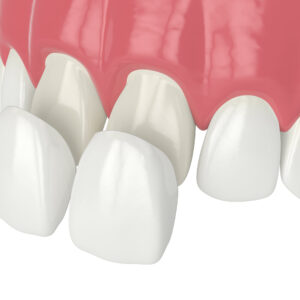Description
Familiarity with Treatment
Glass Ionomer Fillings are a material made from acrylic and a component of glass flouroaluminosilicate. They can be bonded to the tooth using a chemical reaction, making the bond very strong. The filling is bonded straight onto the tooth, and no real preparation is required before being fitted with one. Glass ionomer fillings are used as a base or cement for other forms of fillings if the cavity is particularly big or reaches below the gum line. They are also used for babies and small children, as no drilling or preparation is needed, minimizing pain. Additionally, they are suitable for front teeth and areas that aren’t used for biting or chewing, closely matching the color of natural teeth. However, the material is weaker than other filling materials and is prone to quick wear and tear 1.
Procedure
The procedure for glass ionomer fillings involves bonding the material to the tooth using a chemical reaction, without requiring significant tooth preparation. The material can be used as a base or cement for other forms of fillings, especially for large cavities or those reaching below the gum line. For babies and small children, no drilling or preparation is needed, minimizing pain. The material closely matches the color of natural teeth, and often no preparation is needed before being fitted with a glass ionomer filling 1.
Who is it Suitable For?
Glass ionomer fillings are suitable for:
- Base or Cement: They can be used as a base or cement for other forms of fillings, especially for large cavities or those reaching below the gum line.
- Babies and Small Children: No drilling or preparation is needed, minimizing pain.
- Front Teeth and Non-Stress Areas: They are suitable for front teeth and areas that aren’t used for biting or chewing, closely matching the color of natural teeth 1.
Who is it Not Suitable For?
Glass ionomer fillings may not be suitable for areas subjected to significant biting or chewing force due to their weaker nature and quick wear and tear. They may not be ideal for extensive restorations requiring more durable materials such as dental crowns.
Advantages
- Minimal Tooth Preparation: No real tooth preparation is required before being fitted with a glass ionomer filling.
- Suitable for Children: They are suitable for babies and small children, as no drilling or preparation is needed, minimizing pain.
- Aesthetic Matching: They closely match the color of natural teeth, making them suitable for front teeth and non-stress areas 1.
Complications
- Quick Wear and Tear: Glass ionomer fillings are weaker than other filling materials and are prone to quick wear and tear.
- Limited Durability: They have limited durability compared to some alternatives, making them less suitable for areas subjected to significant biting or chewing force.
Preoperative Care
Preoperative care for glass ionomer fillings involves a comprehensive evaluation by a dental professional to assess the extent of tooth decay or damage and determine the suitability of glass ionomer fillings as a restorative option.
Postoperative Care
Following the placement of glass ionomer fillings, individuals should adhere to postoperative instructions provided by their dental professional. This may include guidelines for oral hygiene, dietary restrictions, and regular follow-up appointments to monitor the integrity of the fillings.





Reviews
There are no reviews yet.